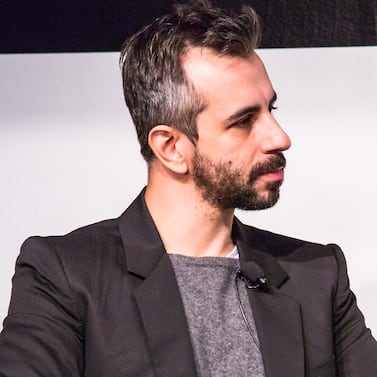
The Business of Fashion
Agenda-setting intelligence, analysis and advice for the global fashion community.

Agenda-setting intelligence, analysis and advice for the global fashion community.

If Nike ever decided to make a video game, it would probably look something like “Airphoria,” the new digital world it debuted in Fortnite on Tuesday.
In the Air Max-themed experience, users drop into a floating city to hunt for different Air Max styles, along the way encountering different Nike iconography, like its signature orange shoes boxes stacked into a tower, and bits of Nike folklore, including an Air Max 97 reimagined as a Japanese bullet train, the shoe’s original design inspiration.
In that regard it reflects both Nike’s push further into gaming and digital goods as well as the ways Fortnite’s maker, Epic Games, is working to draw more fashion and footwear brands into its orbit. “Airphoria” is the first branded experience from a fashion or footwear company made with Unreal Engine for Fortnite, a recently unveiled 3D creation tool from Epic that gives brands more flexibility to build an environment using their own visual language through abilities such as being able to import custom assets.

“It totally changes the way that brands are able to interact inside of Fortnite and create experiences,” said Nate Nanzer, vice president of global partnerships at Epic Games. “Brands are no longer constrained to the Fortnite art style.”
ADVERTISEMENT
The game platform Roblox has let brands customise its spaces, too, as more fashion and footwear companies turn to gaming as a new marketing venue.
For Nike, it shows how the company is trying to connect with the large audience of gamers in the world and using the medium to expand its brand. At the end of 2022, Nike announced the launch of a new digital platform called .Swoosh that allows members to buy Nike-branded virtual goods in the form of NFTs, though Nike doesn’t call them that. It recently hinted at an upcoming partnership with EA Sports, publisher of the FIFA and Madden NFL game franchises, during its first sale of its new virtual sneakers. Fortnite is a force of its own in the gaming world, with 500 million registered accounts, according to Epic.
“It’s really a way to build new canvases for storytelling,” said Ron Faris, vice president and general manager of Nike Virtual Studios, pointing out that the abilities offered in a game environment are unlike anything Nike could do in a physical product display.
Faris and Nanzer described “Airphoria” as the start of a blending of their two ecosystems. In the future, Nike could conceivably introduce other worlds, such as one centred on its Jordan Brand, which in 2021 created a smaller interactive experience in Fortnite to tease the return of the “cool grey” Jordan XI.
Other brands, including Balenciaga and Ralph Lauren, have worked with Fortnite as well. Nanzer said it’s in some ways a fashion company, since the game, which is free to play, makes its money from sales of cosmetic skins.
Owners of .Swoosh sneakers who were hoping to use their virtual shoes on a Fortnite avatar are going to have to keep waiting, though. While the companies said they’ve considered that possibility, there’s no timeline for making it happen yet. Currently, players can only buy the in-game cosmetic items they equip their avatars with in Fortnite.
 Opens in new window
Opens in new windowVans, Balenciaga and Benefit Cosmetics are among the brands tapping the multi-billion-dollar video gaming industry with strategies aimed at generating buzz and fostering community.
LVMH is increasing its use of Epic Games’ technology to create new virtual experiences across its brands, such as virtual fitting rooms and fashion shows and digital twins, the luxury conglomerate announced on Wednesday at the Viva Technology conference in Paris.
The sneaker giant is launching its first big collection of digital goods under its own name after signing up more than 330,000 members to its new web3 platform, .Swoosh.

Marc Bain is Technology Correspondent at The Business of Fashion. He is based in New York and drives BoF’s coverage of technology and innovation, from start-ups to Big Tech.
The nature of livestream transactions makes it hard to identify and weed out counterfeits and fakes despite growth of new technologies aimed at detecting infringement.
The extraordinary expectations placed on the technology have set it up for the inevitable comedown. But that’s when the real work of seeing whether it can be truly transformative begins.
Successful social media acquisitions require keeping both talent and technology in place. Neither is likely to happen in a deal for the Chinese app, writes Dave Lee.
TikTok’s first time sponsoring the glitzy event comes just as the US effectively deemed the company a national security threat under its current ownership, raising complications for Condé Nast and the gala’s other organisers.